A History of Audio Effects
Abstract
1. Introduction
2. Acoustic Effects in Built Spaces
2.1. Reverberation
2.2. Orchestrating Acoustic Effects
2.3. Reverberation Chambers in Music Recording
3. Artificial Audio Effect Technologies
3.1. Sound Recording and Reproduction Technology
3.2. Electromechanical Effects
3.3. Analogue Signal Processing
3.4. Digital Signal Processing
4. Current Research and Future Directions
4.1. Adaptive Digital Audio Effects
- the analysis/feature extraction aspect
- the mapping between features and effects parameters
- the transformation and resynthesis aspect of the digital audio effect
- Auto-adaptive effects—control parameters are derived from features extracted from the input signal.
- External-adaptive effects—control parameters are derived from at least one input signal other than that to which the effect is applied.
- Feedback-adaptive effects—control parameters are derived from features extracted from the output signal.
- Cross-adaptive effects—a combination of at least two external-adaptive effects, where the features mapped to control parameters of the effect applied to one signal are extracted from the other.
4.2. Intelligent Music Production
5. Conclusions
Future Perspectives
Author Contributions
Funding
Acknowledgments
Conflicts of Interest
References
- Verfaille, V.; Holters, M.; Zölzer, U. Introduction. In DAFX—Digital Audio Effects, 2nd ed.; Zölzer, U., Ed.; John Wiley & Sons, Inc.: Chichester, UK, 2011. [Google Scholar]
- Wilmering, T.; Fazekas, G.; Sandler, M.B. Audio Effect Classification Based on Auditory Perceptual Attributes. In Proceedings of the AES 135th Convention, New York, NY, USA, 17–20 October 2013. [Google Scholar]
- Piatier, A. Transectorial innovations and the transformation of firms. Inf. Soc. 1988, 5, 205–231. [Google Scholar] [CrossRef]
- Théberge, P. Any Sound You Can Imagine: Making Music/Consuming Technology; Wesleyan University Press: Middletown, CT, USA, 1997. [Google Scholar]
- Mulder, J. Early history of amplified music: Transectorial innovation and decentralized development. In Proceedings of the Audio Engineering Society Conference: 59th International Conference on Sound Reinforcement Engineering and Technology, Montreal, QC, Canada, 15–17 July 2015. [Google Scholar]
- Julien, O. The diverting of musical technology by rock musicians: The example of double-tracking. Pop. Music 1999, 18, 357–365. [Google Scholar] [CrossRef]
- Roads, C. The Computer Music Tutorial; MIT Press: Cambridge, MA, USA, 1996. [Google Scholar]
- Zölzer, U. DAFX—Digital Audio Effects, 2nd ed.; J. Wiley & Sons, Inc.: Chichester, UK, 2011. [Google Scholar]
- Reiss, J.D.; McPherson, A. Audio Effects—Theory, Implementation and Application; CRC Press: Boka Raton, FL, USA, 2015. [Google Scholar]
- Réveillac, J.M. Musical Sound Effects—Analog and Digital Sound Processing; ISTE Ltd.: London, UK; John Wiley & Sons, Inc.: Hoboken, NJ, USA, 2018. [Google Scholar]
- De Man, B. Audio Effects in Sound Design. In Foundations in Sound Design Volume 1: Linear Media; Filimowicz, M., Ed.; Routledge: New York, NY, USA, 2019; Volume 1, Chapter 4. [Google Scholar]
- Välimäki, V.; Parker, J.D.; Savioja, L.; Smith, M.J.O.; Abel, J.S. Fifty Years of Artificial Reverberation. IEEE Trans. Audio Speech Lang. Process. 2012, 20, 1421–1448. [Google Scholar] [CrossRef]
- Välimäki, V.; Parker, J.D.; Savioja, L.; Smith, M.J.O.; Abel, J.S. More Than Fifty Years of Artificial Reverberation. In Proceedings of the AES 60th International Conference: DREAMS (Dereverberation and Reverberation of Audio, Music, and Speech), At Leuven, Belgium, 3–5 February 2016. [Google Scholar]
- Bohn, D.A. Operator Adjustable Equalizers: An Overview. In Proceedings of the Audio Engineering Society Conference: 6th International Conference: Sound Reinforcement, Nashville, TN, USA, 5–8 May 1988. [Google Scholar]
- Välimäki, V.; Reiss, J.D. All About Audio Equalization: Solutions and Frontiers. Appl. Sci. 2016, 6, 129. [Google Scholar] [CrossRef]
- Bode, H. History of Electronic Sound Modification. J. Acoust. Soc. Am. 1984, 32, 730–738. [Google Scholar]
- Cox, T.; d’Antonio, P. Acoustic Absorbers and Diffusers: Theory, Design and Application; CRC Press: Boca Raton, FL, USA, 2016. [Google Scholar]
- Kuttruff, H. Room Acoustics; CRC Press: Boca Raton, FL, USA, 2009. [Google Scholar]
- Jot, J.M.; Cerveau, L.; Warusfel, O. Analysis and synthesis of room reverberation based on a statistical time-frequency model. In Proceedings of the Audio Engineering Society Convention 103, New York, NY, USA, 26–29 September 1997. [Google Scholar]
- Stewart, R.; Sandler, M. Statistical measures of early reflections of room impulse responses. In Proceedings of the 10th International Conference on Digital Audio Effects (DAFx-07), Bordeaux, France, 11–14 September 2007; pp. 59–62. [Google Scholar]
- De Cesaris, S.; Morandi, F.; Loreti, L.; D’Orazio, D.; Garai, M. Notes about the early to late transition in Italian theatres. In Proceedings of the ICSV22, Florence, Italy, 12–16 July 2015. [Google Scholar]
- Haas, H. The influence of a single echo on the audibility of speech. J. Audio Eng. Soc. 1972, 20, 146–159. [Google Scholar]
- D’Orazio, D.; De Cesaris, S.; Garai, M. A comparison of methods to compute the “effective duration” of the autocorrelation function and an alternative proposal. J. Acoust. Soc. Am. 2011, 130, 1954–1961. [Google Scholar] [CrossRef]
- D’Orazio, D.; Garai, M. The autocorrelation-based analysis as a tool of sound perception in a reverberant field. Rivista di estetica 2017, 66, 133–147. [Google Scholar] [CrossRef]
- Baumann, D. Music and Space: A Systematic and Historical Investigation into the Impact of Architectural Acoustics on Performance Practice followed by a Study of Handel’s Messiah; Peter Lang: Bern, Switzerland, 2011; p. 33. [Google Scholar]
- Herr, C.R.; Siebein, G.W. An Acoustical History of Theaters and Concert Halls: An Investigation of Parallel Development in Music, Performance Spaces, and the Orchestra. In Proceedings of the 86th ACSA Annual Meeting and Technology Conference: Constructing Identity “Souped-up” and “Un-plugged”, Cleveland, OH, USA, 14–17 March 1998. [Google Scholar]
- Alvim, D. As the World Leaks into the Work: Composition and architecture. Organised Sound 2018, 23, 51–60. [Google Scholar] [CrossRef]
- Forsyth, M. Buildings for Music: The Architect, the Musician, the Listener from the Seventeenth Century to the Present Day; The MIT Press: Cambridge, MA, USA, 1985. [Google Scholar]
- Sabine, W.C. Reverberation. In The American Architect; Peninsula Publishing: Los Altos, CA, USA, 1900; p. 4. [Google Scholar]
- Sabine, W.C. Collected Papers on Acoustics; Dover: Mineola, NY, USA, 1964; p. 272. [Google Scholar]
- Bryant, D. The ‘cori spezzati’of St Mark’s: Myth and reality. Early Music Hist. 1981, 1, 165–186. [Google Scholar] [CrossRef]
- Blesser, B. An Interdisciplinary Synthesis of Reverberation Viewpoints. J. Acoust. Soc. Am. 2001, 49, 867–903. [Google Scholar]
- Weinel, J. Inner Sound: Altered States of Consciousness in Electronic Music and Audio-Visual Media; Oxford University Press: New York, NY, USA, 2018. [Google Scholar]
- Fazenda, B.; Scarre, C.; Till, R.; Pasalodos, R.J.; Guerra, M.R.; Tejedor, C.; Peredo, R.O.; Watson, A.; Wyatt, S.; Benito, C.G.; et al. Cave acoustics in prehistory: Exploring the association of Palaeolithic visual motifs and acoustic response. J. Acoust. Soc. Am. 2017, 142, 1332–1349. [Google Scholar] [CrossRef]
- Till, R. Songs of the stones: An investigation into the acoustic history and culture of Stonehenge. IASPM@ J. 2011, 1, 1–18. [Google Scholar] [CrossRef]
- Watson, A.; Keating, D. Architecture and sound: An acoustic analysis of megalithic monuments in prehistoric Britain. Antiquity 1999, 73, 325–336. [Google Scholar] [CrossRef]
- Jahn, R.G.; Devereux, P.; Ibison, M. Acoustical resonances of assorted ancient structures. J. Acoust. Soc. Am. 1996, 99, 649–658. [Google Scholar] [CrossRef]
- Cook, I.A.; Pajot, S.K.; Leuchter, A.F. Ancient Architectural Acoustic Resonance Patterns and Regional Brain Activity. Time Mind J. Archaeol. Conscious. Cult. 2008, 1, 95–104. [Google Scholar] [CrossRef]
- Devereux, P. A Ceiling Painting in the Hal-Saflieni Hypogeum as Acoustically-Related Imagery: A Preliminary Note. Time Mind 2009, 2, 225–231. [Google Scholar] [CrossRef]
- Till, R. An archaeoacoustic study of the Hal Saflieni Hypogeum on Malta. Antiquity 2017, 91, 74–89. [Google Scholar] [CrossRef][Green Version]
- Baldwin, B. The Date, Identity, and Career of Vitruvius. Latomus 1990, 49, 425–434. [Google Scholar]
- Lokki, T.; Southern, A.; Siltanen, S.; Savioja, L. Studies of Epidaurus with a hybrid room acoustics modelling method. In Proceedings of the Acoustics of Ancient Theaters Patras, Patras, Greece, 18–21 September 2011. [Google Scholar]
- Lokki, T.; Southern, A.; Siltanen, S.; Savioja, L. Acoustics of Epidaurus–studies with room acoustics modelling methods. Acta Acust. United Acust. 2013, 99, 40–47. [Google Scholar] [CrossRef]
- Williams, K.; Ostwald, M.J. Architecture and Mathematics from Antiquity to the Future; Springer: Cham, Switzerland, 2015. [Google Scholar]
- Vovolis, T. Mask, actor, theatron and landscape in classical Greek theatre. In Proceedings of the Acoustics of Ancient Theatres Conference, Patras, Greece, 18–21 September 2011. [Google Scholar]
- Vovolis, T. Acoustical masks and sound aspects of ancient greek theatre. Classica 2012, 25, 149–173. [Google Scholar] [CrossRef]
- Cingolani, S.; Spagnolo, R. Acustica Musicale e Architettonica; UTET Libreria: Torino, Italy, 2005. [Google Scholar]
- Arns, R.G.; Crawford, B.E. Resonant Cavities in the History of Architectural Acoustics. Technol. Cult. 1995, 36, 104–135. [Google Scholar] [CrossRef]
- Cauer, E.; Mathis, W.; Pauli, R. Life and work of Wilhelm Cauer (1900–1945). In Proceedings of the 14th International Symposium on Mathematical Theory of Networks and Systems (MTNS2000), Perpignan, France, 19–23 June 2000. [Google Scholar]
- Spagnolo, R. Manuale di Acustica Applicata; UTET Libreria: Torino, Italy, 2001. [Google Scholar]
- Desarnaulds, V. De l’acoustique des églises en Suisse–Une Approche Pluridisciplinaire. Ph.D. Thesis, École Polytechnique de Lausanne, Lausanne, Switzerland, 2002. [Google Scholar]
- Mijic, M.; Sumarac-Pavlovic, D.; kralja Aleksandra, B. Acoustic Resonators in Serbian Orthodox Churches; Forum Acusticum Sevilla: Sevilla, Spain, 16–20 September 2002. [Google Scholar]
- Kircher, A. Phonurgia Nova sive Coniugium Mechanico-Physicum Artis et Naturae Paranympha Phonosophia Concinnatum; Rudolph Dreherr: Kempten, Germany, 1673; pp. 50, 98–99. [Google Scholar]
- Lubman, D. Archaeological acoustic study of chirped echo from the Mayan pyramid at Chichén Itzá. J. Acoust. Soc. Am. 1998, 104. [Google Scholar] [CrossRef]
- Garza, C.; Medina, A.; Padilla, P.; Ramos, A.; Zalaquett, F. Arqueoacústica maya. La necesidad del estudio sistemático de efectos acústicos en sitios arqueológicos. Estud. Cult. Maya 2008, 32, 63–87. [Google Scholar] [CrossRef]
- Schafer, R.M. The Soundscape: Our Sonic Environment and the Tuning of the World; Simon and Schuster: New York, NY, USA, 1993; p. 221. [Google Scholar]
- Postma, B.N.; Jouan, S.; Katz, B.F. Pre-Sabine room acoustic design guidelines based on human voice directivity. J. Acoust. Soc. Am. 2018, 143, 2428–2437. [Google Scholar] [CrossRef]
- D’Orazio, D.; Nannini, S. Towards Italian Opera Houses: A Review of Acoustic Design in Pre-Sabine Scholars. Acoustics 2019, 1, 15. [Google Scholar] [CrossRef]
- D’Orazio, D.; De Cesaris, S.; Morandi, F.; Garai, M. The aesthetics of the Bayreuth Festspielhaus explained by means of acoustic measurements and simulations. J. Cult. Herit. 2018, 34, 151–158. [Google Scholar] [CrossRef]
- Doyle, P. Echo and Reverb: Fabricating Space in Popular Music Recording, 1900–1960; Wesleyan University Press: Middletown, CT, USA, 2005. [Google Scholar]
- Round, H.J.; West, A.G.D. Transmission and Reproduction of Sound. U.S. Patent 1,853,286, 12 April 1932. [Google Scholar]
- Rettinger, M. Reverberation Chambers for Broadcasting and Recording Studios. J. Audio Eng. Soc. 1957, 5. [Google Scholar]
- Stravinsky, I. An Autobiography; W. W. Norton: New York, NY, USA, 1962. [Google Scholar]
- Bernardini, N.; Rudi, J. Compositional Use of Digital Audio Effects. J. New Music Res. 2002, 31, 87–91. [Google Scholar] [CrossRef]
- Stravinsky, I. Meine Stellung zur Schallplatte. Kult. Schallplatte 1930, 1, 65. [Google Scholar]
- Toch, E. Über meine Kantata ’Das Wasser’ und meine Grammophonmusik. Melos 1930, 9, 221. [Google Scholar]
- Katz, M. Hindemith, Toch, and Grammophonmusik. J. Musicol. Res. 2001, 20, 161–180. [Google Scholar] [CrossRef]
- Davies, H. A History of Sampling. Organised Sound 1996, 1, 3–11. [Google Scholar] [CrossRef]
- Holmes, T. Electronic and Experimental Music, 3rd ed.; Routledge: New York, NY, USA, 2008. [Google Scholar]
- Schaeffer, P. La Musique Concrète; Presses Universitaires de France: Paris, France, 1967. [Google Scholar]
- Schaeffer, P. Traité des Objets Musicaux; Editions du Seuil: Paris, France, 1966. [Google Scholar]
- Teruggi, D. Technology and musique concrète: The technical developments of the Groupe de Recherches Musicales and their implication in musical composition. Organised Sound 2007, 12, 213–231. [Google Scholar] [CrossRef]
- Gabor, D. Theory of Communication. Part 1: The analysis of information. J. Inst. Electr. Eng. Part III Radio Commun. Eng. 1946, 93, 429–441. [Google Scholar] [CrossRef]
- Marlens, W.S. Duration and Frequency Alteration. J. Audio Eng. Soc. 1966, 14, 132–139. [Google Scholar]
- French, N.R.; Zinn, M.K. Method of and Apparatus for Reducing Width of Transmission Bands. U.S. Patent 1,671,151, 29 May 1928. [Google Scholar]
- Fairbanks, G.; Everitt, W.L.; Jaeger, R.P. Recording Device. U.S. Patent 2,886,650, 12 May 1959. [Google Scholar]
- Xenakis, I. Formalized Music; Revised Edition; Pendragon Press: Stuyvesant, NY, USA, 1992. [Google Scholar]
- Cage, J. Werkverzeichnis; Edition Peters: Frankfurt, Germany, 1962. [Google Scholar]
- Kane, B. Acousmatic Fabrications: Les Paul and the ’Les Paulverizer’. J. Vis. Cult. 2011, 10, 212–231. [Google Scholar] [CrossRef]
- Dutilleux, P. Filters, Delay, Modulations and Demodulations: A Tutorial. In Proceedings of the 1st COST-G6 Workshop on Digital Audio Effects (DAFx98), Barcelona, Spain, 19–21 November 1998. [Google Scholar]
- Lewisohn, M. The Beatles Recordings Sessions; Harmony Books (Crown Publishing): New York, NY, USA, 1989. [Google Scholar]
- Abbey Road Studios. Inside Abbey Road Artificial Double Tracking. Available online: https://www.abbeyroad.com/news/inside-abbey-road-artificial-double-tracking-2530 (accessed on 19 January 2020).
- Verfaille, V.; Zölzer, U.; Arfib, D. Adaptive Digital Audio Effects (A-DAFx): A New Class Of Sound Transformations. IEEE Trans. Audio Speech Lang. Process. 2006, 14, 1817–1831. [Google Scholar] [CrossRef]
- Wegel, R.L. Wave Transmission Device. U.S. Patent 1,852,795, 5 April 1932. [Google Scholar]
- Hammond, L. Electrical Musical Instrument. U.S. Patent 2,230,836, 4 February 1941. [Google Scholar]
- Fidi, W. Delay Device Particularly for the Production of Artificial Reverberation. U.S. Patent 3,517,344, 23 June 1970. [Google Scholar]
- Kuhl, W.K. Über die akustischen und technischen Eigenschaften der Nachhallplatte. Rundfunktechnische Mitteilungen 1958, 2, 111–116. [Google Scholar]
- Kuhl, W.K. Reverberation Device. U.S. Patent 3,719,905, 6 March 1973. [Google Scholar]
- Manning, P. The significance of techné in understanding the art and practice of electroacoustic composition. Organised Sound 2006, 11, 81–90. [Google Scholar] [CrossRef][Green Version]
- Exhibits. The Music Trade Review Magazine Article. Music Trade Review Magazine, July 1941; 15–22. [Google Scholar]
- Lubow, R. Electrostatic Storage System. U.S. Patent 3,215,911, 2 November 1965. [Google Scholar]
- Lubow, R. Vibrato System with Variable Speed Signal Storage Disc. U.S. Patent 3,518,354, 30 June 1970. [Google Scholar]
- Taylor, P. History of the Binson Amplifier HiFi Company. Available online: https://www.effectrode.com/knowledge-base/history-of-the-binson-amplifier-hifi-company/ (accessed on 19 February 2019).
- Dudley, H. System for the Artificial Production of Vocal or other Sounds. U.S. Patent 2,121,142, 21 June 1938. [Google Scholar]
- Dudley, H. Remaking Speech. J. Acoust. Soc. Am. 1939, 11, 169–177. [Google Scholar] [CrossRef]
- Rhea, T.L. Bode’s Melodium and Melochord. Contemp. Keyboard Electron. Perspect. 1980, 6, 68. [Google Scholar]
- Meyer-Eppler, W. Elektronische Klangerzeugung: Elektronische Musik und Synthetische Sprache; Ferdinand Dümmlers: Bonn, Germany, 1949. [Google Scholar]
- Bode, H. Solid State Audio Frequency Spectrum Shifter. In Proceedings of the AES 17th Annual Meeting, New York, NY, USA, 11–15 October 1965. [Google Scholar]
- Schroeder, M.R. Natural Sounding Artificial Reverberation. J. Audio Eng. Soc. 1962, 10, 219–223. [Google Scholar]
- Moorer, J.A. About This Reverberation Business. Comput. Music J. 1979, 3, 13–28. [Google Scholar] [CrossRef]
- Jeffs, R.; Holden, S.; Bohn, D. Dynamics Processors—Technology & Application Tips; RaneNote 155; Rane Corporation: Mukilteo, WA, USA, 2005. [Google Scholar]
- Hodgson, J. A field guide to equalisation and dynamics processing on rock and electronica records. Pop. Music 2010, 29, 283–297. [Google Scholar] [CrossRef]
- Lundheim, L. On Shannon and “Shannon’s Formula”. Telektronikk 2002, 98, 20–29. [Google Scholar]
- Williamson, D.T.N. Design of tone controls and auxiliary gramophone circuits. Wirel. World 1949, 55, 20–29. [Google Scholar]
- Massenburg, G. Parametric Equalization. In Proceedings of the 42nd Audio Engineering Society Convention, Los Angeles, CA, USA, 2–5 May 1972. [Google Scholar]
- Reiss, J.D.; Brandtsegg, Ø. Applications of Cross-Adaptive Audio Effects: Automatic Mixing, Live Performance and Everything in Between. Front. Digit. Humanit. 2018, 5, 17. [Google Scholar] [CrossRef]
- Reinhart, M.S. Chet Atkins: The Greatest Songs of Mister Guitar; McFarland & Company, Inc.: Jefferson, NC, USA, 2014. [Google Scholar]
- Douglas, S.C. Introduction to Adaptive Filters. In Digital Signal Processing Handbook; Madisetti, V.K., Williams, D.B., Eds.; CRC Press LLC: Boca Raton, FL, USA, 1999. [Google Scholar]
- Widrow, B.; Mantey, P.; Griffiths, L.; Goode, B. Adaptive antenna systems. Proc. IEEE 1967, 55, 2143–2159. [Google Scholar] [CrossRef]
- Lucky, R.W. Automatic equalization for digital communication. Bell Syst. Tech. J. 1965, 44, 547–588. [Google Scholar] [CrossRef]
- Widrow, B.; Glover, J.R.; McCool, J.M.; Kaunitz, J.; Williams, C.S.; Hearn, R.H.; Zeidler, J.R.; Dong, J.E.; Goodlin, R.C. Adaptive noise cancelling: Principles and applications. Proc. IEEE 1975, 63, 1692–1716. [Google Scholar] [CrossRef]
- Carusone, A.; Johns, D. Analogue adaptive filters: Past and present. IEE Proc. Circuits Dev. Syst. 2000, 147, 82–90. [Google Scholar] [CrossRef]
- Snoddy, G.T.; Hobbs, R.V. Tone Modifier for Electrically Amplified Electro-Mechanically Produced Musical Tones. U.S. Patent 3,213,181, 19 October 1965. [Google Scholar]
- Hicks, M. Sixties Rock: Garage, Psychedelic, and Other Satisfactions; University of Illinois Press: Champaign, IL, USA, 2000. [Google Scholar]
- Diekman, D. Twentieth Century Drifter: The Life of Marty Robbins; University of Illinois Press: Champaign, IL, USA, 2012. [Google Scholar]
- Walksman, S. The Turn to Noise: Rock Guitar from the 1950s to the 1970s. In The Cambridge Companion to the Guitar; Coelho, V.A., Ed.; Cambridge University Press: Cambridge, UK, 2003. [Google Scholar]
- Herbst, J.P. “My setup is pushing about 500 watts—It’s all distortion”: Emergence, development, aesthetics and intentions of the rock guitar sound. Vox Popular 2020. forthcoming. [Google Scholar]
- Eno, B. The Studio as Compositional Tool. In Audio Culture–Readings in Modern Music; Warner, D., Ed.; Bloomsbury Publishing: New York, NY, USA, 2017. [Google Scholar]
- Risset, J.C. Examples of the Musical Use of Digital Audio Effects. J. New Music Res. 2002, 31, 93–97. [Google Scholar] [CrossRef]
- Warner, T. Pop Music: Technology and Creativity: Trevor Horn and the Digital Revolution; Ashgate Publishing Company: Farnham, UK, 2003. [Google Scholar]
- Moorefield, V. The Producer as Composer—Shaping the Sounds of Popular Music; MIT Press: Cambridge, MA, USA, 2005. [Google Scholar]
- Ramshaw, P. Is music production now a composition process? In Proceedings of the 2005 Art of Record Production Conference, London, UK, 17–18 September 2005. [Google Scholar]
- McIntyre, P. The Systems Model of Creativity: Analyzing the Distribution of Power in the Studio. In Proceedings of the 2008 Art of Record Production Conference, University of Massachusetts, Lowell, MA, USA, 14–16 November 2008. [Google Scholar]
- Marrington, M. Experiencing musical composition in the DAW: The software interface as mediator of the musical idea. In Proceedings of the 2010 Art of Record Production Conference, Leeds, UK, 2–4 December 2011. [Google Scholar]
- Bell, A.P. Dawn of the DAW: The Studio as Musical Instrument; Oxford University Press: New York, NY, USA, 2018. [Google Scholar]
- Duignan, M. Computer Mediated Music Production: A Study of Abstraction and Activity. Ph.D. Thesis, Victoria University of Wellington, Wellington, New Zealand, 2008. [Google Scholar]
- Flanagan, J.L.; Golden, R. Phase vocoder. Bell Syst. Tech. J. 1966, 45, 1493–1509. [Google Scholar] [CrossRef]
- Adlersberg, S.; Stettiner, Y.; Aizner, M.; Berstein, A. Noise Reduction System. U.S. Patent 5,012,519, 30 April 1991. [Google Scholar]
- Hildebrand, H.A. Pitch Detection and Intonation Correction Apparatus and Method. U.S. Patent 5,973,252, 26 October 1999. [Google Scholar]
- Crockett, Z. The Mathematical Genius of Auto-Tune. Priceonomics 2016. Available online: https://priceonomics.com/the-inventor-of-auto-tune/ (accessed on 16 January 2020).
- Tyrangiel, J. Singer’s Little Helper. Time Magazine, 16 February 2009; Volume 173. [Google Scholar]
- Roads, C. Microsound; MIT Press: Cambridge, MA, USA, 2004. [Google Scholar]
- Heyser, R.C. Acoustical measurements by time delay spectrometry. J. Audio Eng. Soc. 1967, 15, 370–382. [Google Scholar]
- Bäder, K.O.; Blesser, B. Digitaltechnik im Studio: Ein Elektronisches Nachhallgerät. Fernseh Kinotech. 1977, 31, 443–445. [Google Scholar]
- Pakarinen, J.; Yeh, D.T. A Review of Digital Techniques for Modeling Vacuum-Tube Guitar Amplifiers. Comput. Music J. 2009, 33, 85–100. [Google Scholar] [CrossRef]
- Esqueda, F.; Pöntynen, H.; Parker, J.; Bilbao, S. Virtual Analog Models of the Lockhart and Serge Wavefolders. Appl. Sci. 2017, 7, 1328. [Google Scholar] [CrossRef]
- Verfaille, V.; Arfib, D.; Keiler, F.; von dem Knesebeck, A.; Zölzer, U. Adaptive Digital Audio Effects. In DAFX—Digital Audio Effects, 2nd ed.; Zölzer, U., Ed.; John Wiley & Sons, Inc.: Chichester, UK, 2011. [Google Scholar]
- Giannoulis, D.; Massberg, M.; Reiss, J.D. Digital dynamic range compressor design—A tutorial and analysis. J. Audio Eng. Soc. 2012, 60, 399–408. [Google Scholar]
- Stikvoort, E.F. Digital dynamic range compressor for audio. J. Audio Eng. Soc. 1986, 34, 3–9. [Google Scholar]
- Oliveira, A.J. A feedforward side-chain limiter/compressor/de-esser with improved flexibility. J. Audio Eng. Soc. 1989, 37, 226–240. [Google Scholar]
- Hämäläinen, P. Smoothing of the control signal without clipped output in digital peak limiters. In Proceedings of the International Conference on Digital Audio Effects (DAFx), Hamburg, Germany, 26–28 September 2002; pp. 195–198. [Google Scholar]
- McNally, G.W. Dynamic range control of digital audio signals. J. Audio Eng. Soc. 1984, 32, 316–327. [Google Scholar]
- Hughes, B.J. Magnetic Recording Dynamic Range Compressor/Expander System. U.S. Patent 2,886,650, 12 May 1959. [Google Scholar]
- Herrera, P.; Serra, X. Audio Descriptors and Descriptor Schemes in the Context of MPEG-7. In Proceedings of the International Computer Music Conference (ICMC 1999), Beijing, China, 22–27 October 1999. [Google Scholar]
- Peeters, G.; Giordano, B.L.; Susini, P.; Misdariis, N.; McAdams, S. The Timbre Toolbox: Extracting Audio Descriptors from Musical Signals. J. Acoust. Soc. Am. 2011, 130, 2902–2916. [Google Scholar] [CrossRef]
- Verfaille, V.; Guastavino, C.; Traube, C. An interdisciplinary approach to audio effect classification. In Proceedings of the 9th International Conference on Digital Audio Effects (DAFx-06), Montréal, QC, Canada, 18–20 September 2006. [Google Scholar]
- Moffat, D.; Ronan, D.; Reiss, J.D. An Evaluation of Audio Feature Extraction Toolboxes. In Proceedings of the 18th International Conference on Digital Audio Effects (DAFx-15), Trondheim, Norway, 30 November–3 December 2015. [Google Scholar]
- Celma, O.; Gómez, E.; Janer, J.; Gouyon, F.; Herrera, P.; Garcia, D. Tools for content-based retrieval and transformation of audio using MPEG-7: The SPOffline and the MDTools. In Proceedings of the AES 25th International Conference, London, UK, 17–19 June 2004. [Google Scholar]
- Vinet, H.; Herrera, P.; Pachet, F. The CUIDADO Project: New Applications based on Audio and Music Content Description. In Proceedings of the International Computer Music Conference (ICMC), Göteborg, Sweden, 16–21 September 2002. [Google Scholar]
- Wilmering, T.; Fazekas, G.; Sandler, M.B. High Level Semantic Metadata for the Control of Multitrack Adaptive Audio Effects. In Proceedings of the 133rd Convention of the AES, San Francisco, CA, USA, 26–19 October 2012. [Google Scholar]
- Peeters, G.; McAdams, S.; Herrera, P. Instrument Sound Description in the Context of MPEG-7. In Proceedings of the International Computer Music Conference (ICMC 2000), Berlin, Germany, 27 August–1 September 2000; pp. 166–169. [Google Scholar]
- Stables, R.; Reiss, J.D.; De Man, B. Intelligent Music Production; Routledge: New York, NY, USA, 2019. [Google Scholar]
- Moffat, D.; Sandler, M.B. Machine Learning Multitrack Gain Mixing of Drums. In Proceedings of the Audio Engineering Society Convention 147, New York, NY, USA, 16–19 October 2019. [Google Scholar]
- Chourdakis, E.T.; Reiss, J.D. A Machine-Learning Approach to Application of Intelligent Artificial Reverberation. J. Audio Eng. Soc. 2017, 65, 56–65. [Google Scholar] [CrossRef]
- Moffat, D.; Sandler, M.B. An Automated Approach to the Application of Reverberation. In Proceedings of the Audio Engineering Society Convention 147, New York, NY, USA, 16–19 October 2019. [Google Scholar]
- Ma, Z.; De Man, B.; Pestana, P.D.; Black, D.A.; Reiss, J.D. Intelligent multitrack dynamic range compression. J. Audio Eng. Soc. 2015, 63, 412–426. [Google Scholar] [CrossRef]
- Moffat, D.; Sandler, M.B. Automatic Mixing Level Balancing Enhanced Through Source Interference Identification. In Proceedings of the 146th Audio Engineering Society Convention, Dublin, Ireland, 20–23 March 2019. [Google Scholar]
- Perez Gonzalez, E.; Reiss, J. Automatic gain and fader control for live mixing. In Proceedings of the IEEE Workshop on Applications of Signal Processing to Audio and Acoustics (WASPAA’09), New Paltz, NY, USA, 18–21 October 2009; pp. 1–4. [Google Scholar]
- Moffat, D.; Thalmann, F.; Sandler, M.B. Towards a Semantic Web Representation and Application of Audio Mixing Rules. In Proceedings of the 4th Workshop on Intelligent Music Production (WIMP), Huddersfield, UK, 14 September 2018. [Google Scholar]
- Wilmering, T.; Fazekas, G.; Sandler, M.B. AUFX-O: Novel Methods for the Representation of Audio Processing Workflows. In Proceedings of the 15th International Semantic Web Conference (ISWC2016), Kobe, Japan, 17–21 October 2016. [Google Scholar]
- Allik, A.; Fazekas, G.; Sandler, M. An ontology for audio features. In Proceedings of the 17th International Society for Music Information Retrieval Conference (ISMIR), New York, NY, USA, 7–11 August 2016; pp. 258–275. [Google Scholar]
- Moffat, D.; Sandler, M.B. Adaptive Ballistics Control of Dynamic Range Compression for Percussive Tracks. In Proceedings of the 145th Audio Engineering Society Convention, New York, NY, USA, 17–20 October 2018. [Google Scholar]
- Moffat, D.; Sandler, M.B. Approaches in Intelligent Music Production. Arts 2019, 8, 125. [Google Scholar] [CrossRef]
- Pardo, B.; Rafii, Z.; Duan, Z. Audio Source Separation in a Musical Context; Springer Handbook of Systematic Musicology; Springer: Berlin/Heidelberg, Germany, 2018; pp. 285–298. [Google Scholar]
- Martínez Ramírez, M.A.; Reiss, J.D. Deep Learning and Intelligent Audio Mixing. In Proceedings of the 3rd Workshop on Intelligent Music Production (WIMP), Salford, UK, 15 September 2017. [Google Scholar]
- Mimilakis, S.I.; Cano, E.; Abeßer, J.; Schuller, G. New sonorities for jazz recordings: Separation and mixing using deep neural networks. In Proceedings of the 2nd AES Workshop on Intelligent Music Production (WIMP), London, UK, 13 September 2016. [Google Scholar]
- Martínez Ramírez, M.A.; Reiss, J.D. Analysis and prediction of the audio feature space when mixing raw recordings into individual stems. In Proceedings of the 143rd Audio Engineering Society Convention, New York, NY, USA, 18–21 October 2017. [Google Scholar]
- Martínez Ramírez, M.A.; Reiss, J.D. Stem audio mixing as a content-based transformation of audio features. In Proceedings of the 19th IEEE Workshop on Multimedia Signal Processing (MMSP), Luton, UK, 16–18 October 2017. [Google Scholar]
- Verma, P.; Smith, J.O. Neural style transfer for audio spectograms. In Proceedings of the 31st Conference on Neural Information Processing Systems (NIPS 2017), Workshop for Machine Learning for Creativity and Design, Long Beach, CA, USA, 8 December 2017. [Google Scholar]
- Martínez Ramírez, M.A.; Reiss, J.D. End-to-End Equalization with Convolutional Neural Networks. In Proceedings of the 21st International Conference on Digital Audio Effects (DAFx-18), Aveiro, Portugal, 4–8 September 2018. [Google Scholar]
- Martínez Ramírez, M.A.; Reiss, J.D. Modeling of Nonlinear Audio Effects with End-to-End Deep Neural Networks. In Proceedings of the IEEE International Conference on Acoustics, Speech, and Signal Processing (ICASSP), Brighton, UK, 12–17 May 2019. [Google Scholar]
- Parker, J.D.; Esqueda, F.; Bergner, A. Modelling of Nonlinear State-Space Systems Using a Deep Neural Network. In Proceedings of the 23rd International Conference on Digital Audio Effects (DAFx-19), Birmingham, UK, 2–6 September 2019. [Google Scholar]
- Bromham, G. How can academic practice inform mix-craft? In Mixing Music; Perspectives on Music Production; Hepworth-Sawyer, R., Hodgson, J., Eds.; Routledge: New York, NY, USA, 2016; Chapter 16; pp. 245–256. [Google Scholar]
- Sabin, A.T.; Rafii, Z.; Pardo, B. Weighted-function-based rapid mapping of descriptors to audio processing parameters. J. Audio Eng. Soc. 2011, 59, 419–430. [Google Scholar]
- Nercessian, S.; Lukin, A. Speech Dereverberation using Recurrent Neural Networks. In Proceedings of the 23rd International Conference on Digital Audio Effects (DAFx-19), Birmingham, UK, 2–6 September 2019. [Google Scholar]
- King, A. Technology as a vehicle (tool and practice) for developing diverse creativities. In Activating Diverse Musical Creativities: Teaching and Learning in Higher Music Education; Burnard, P., Haddon, E., Eds.; Bloomsbury Publishing: London, UK, 2015; Chapter 11; pp. 203–222. [Google Scholar]
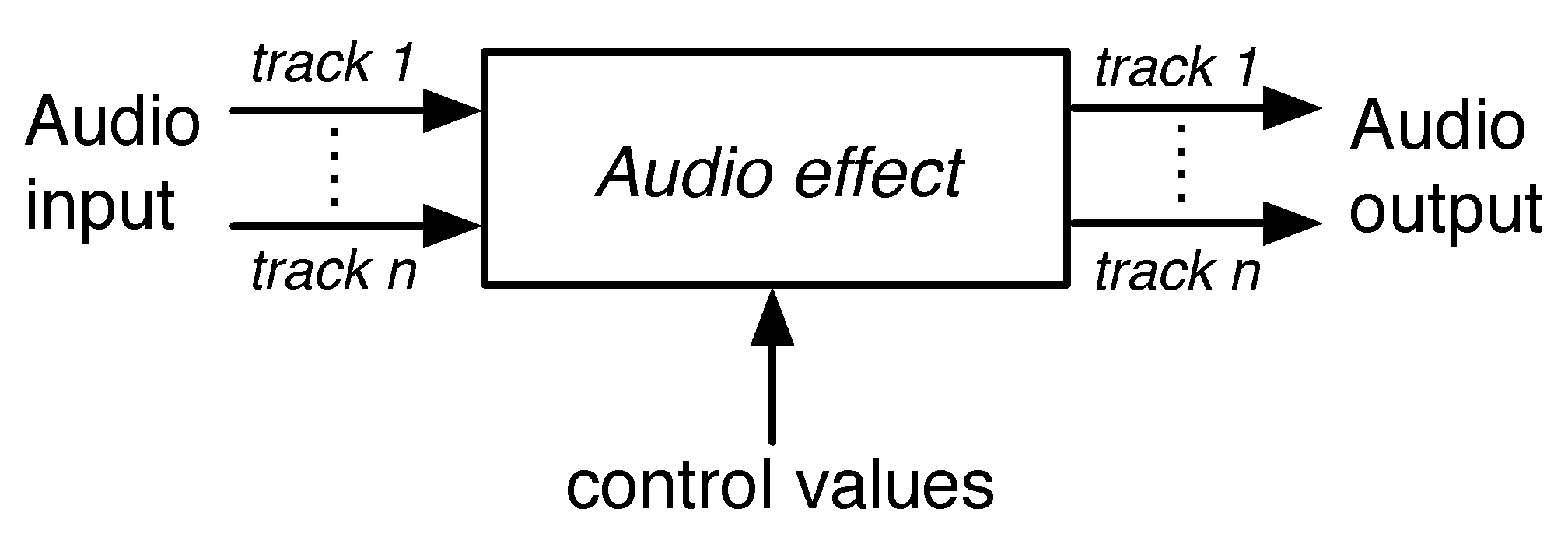
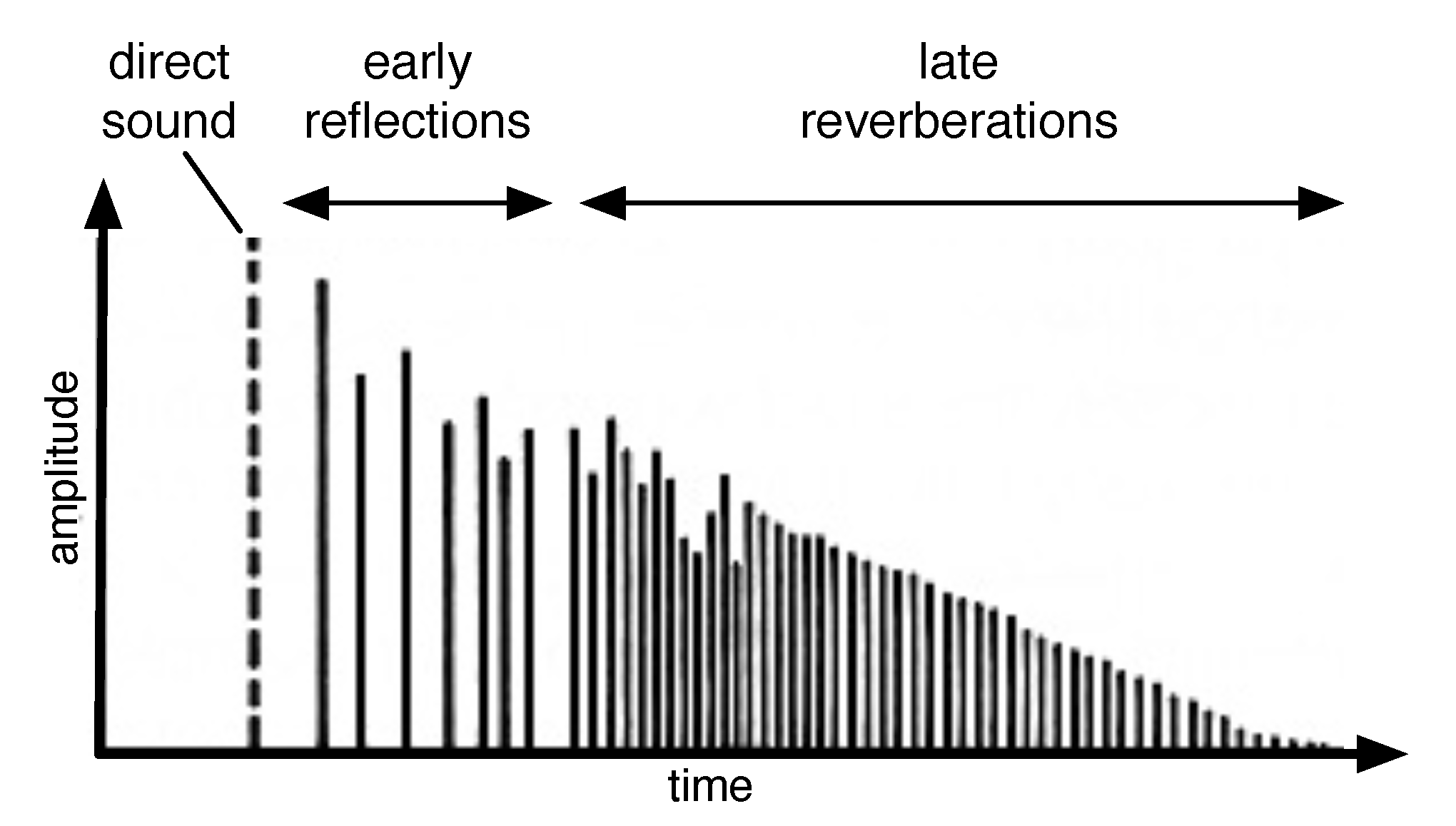
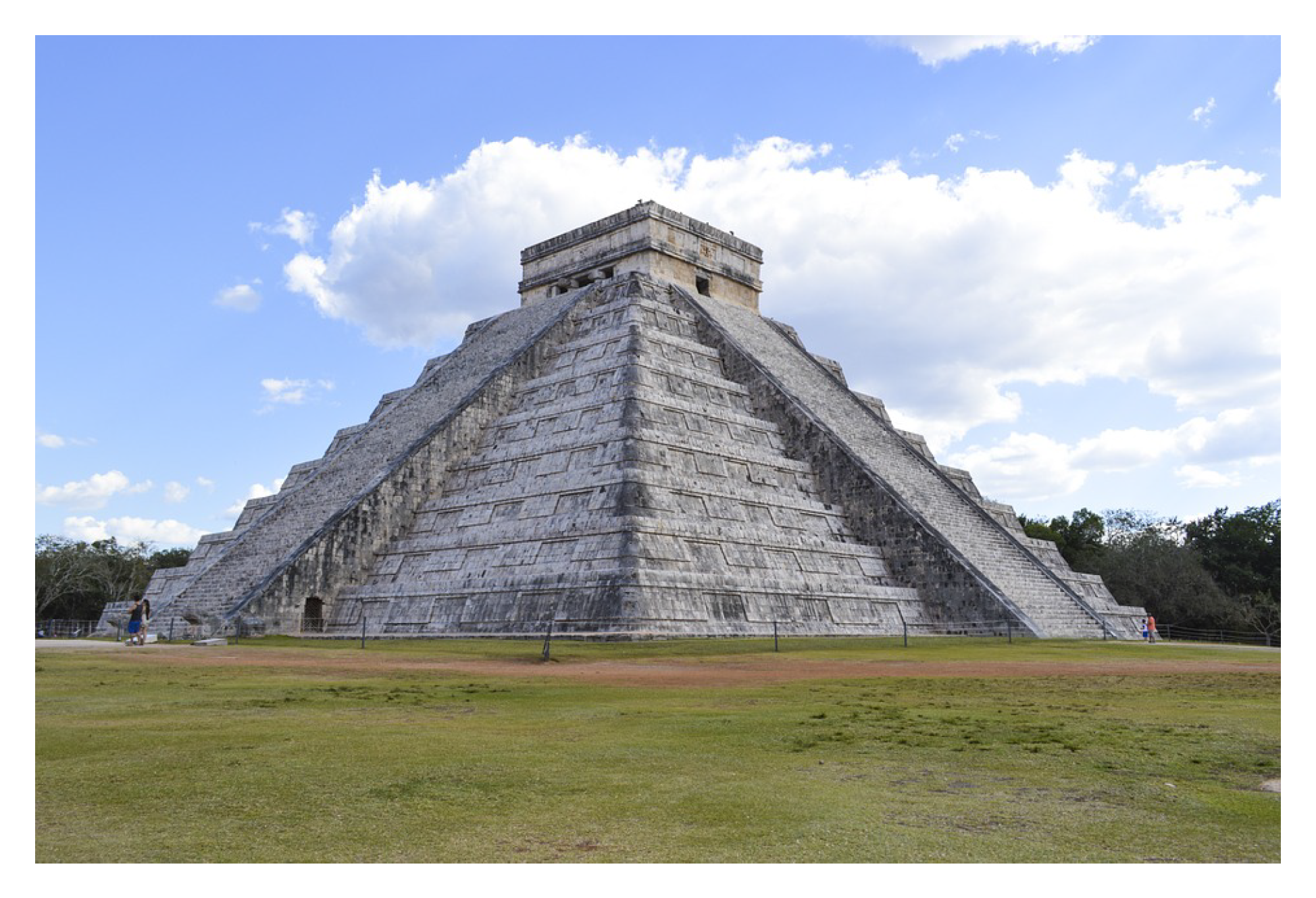
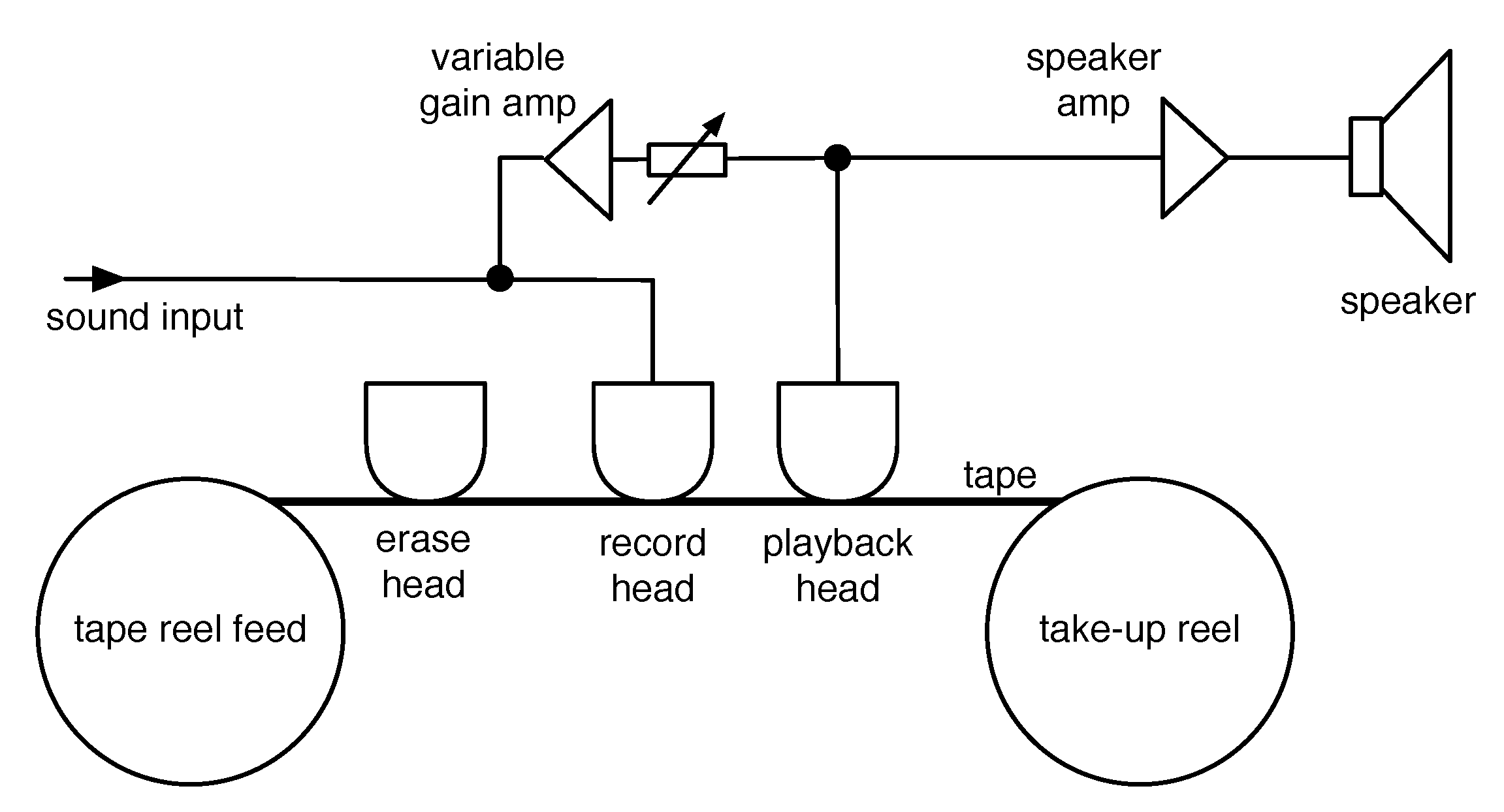
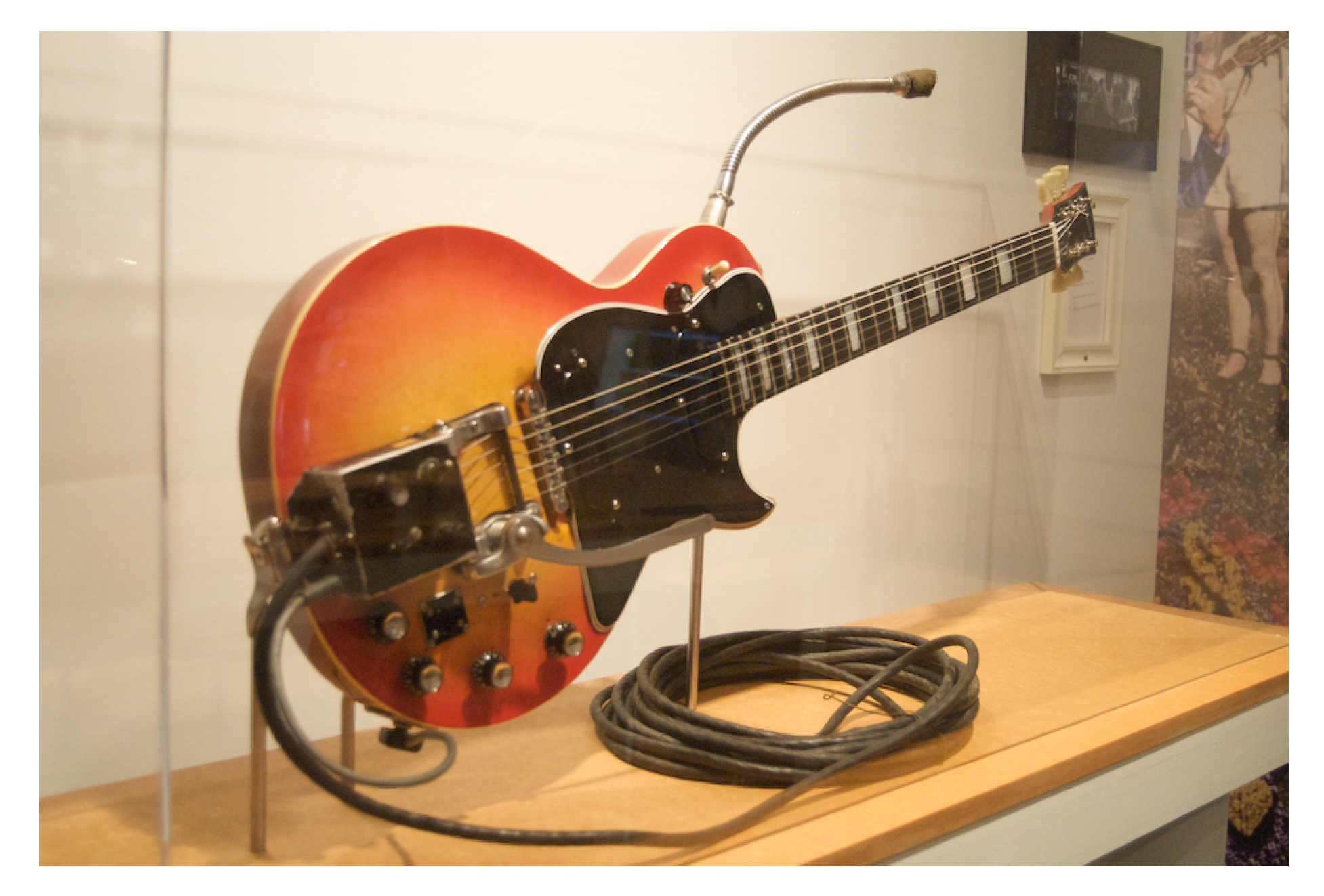
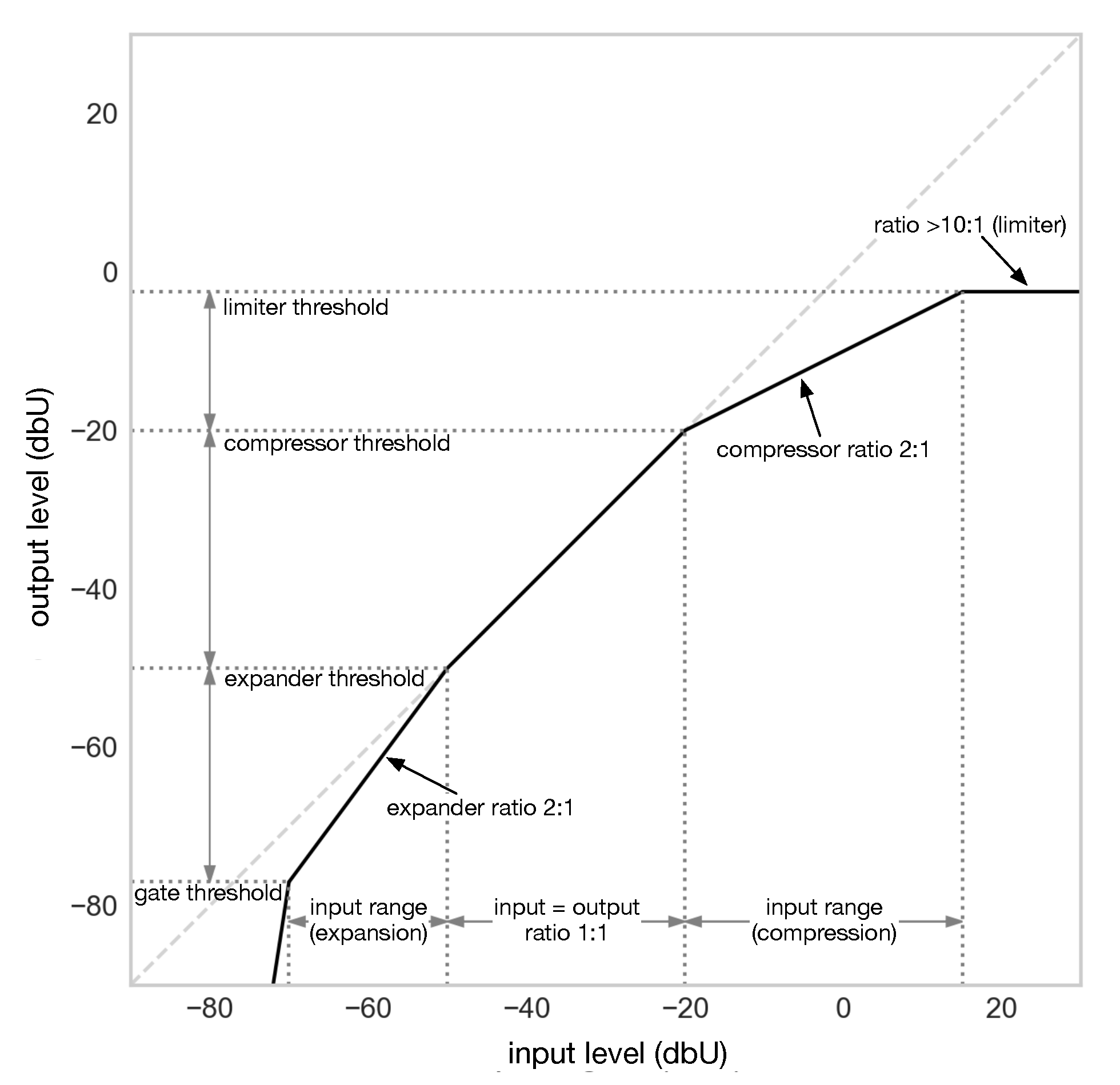
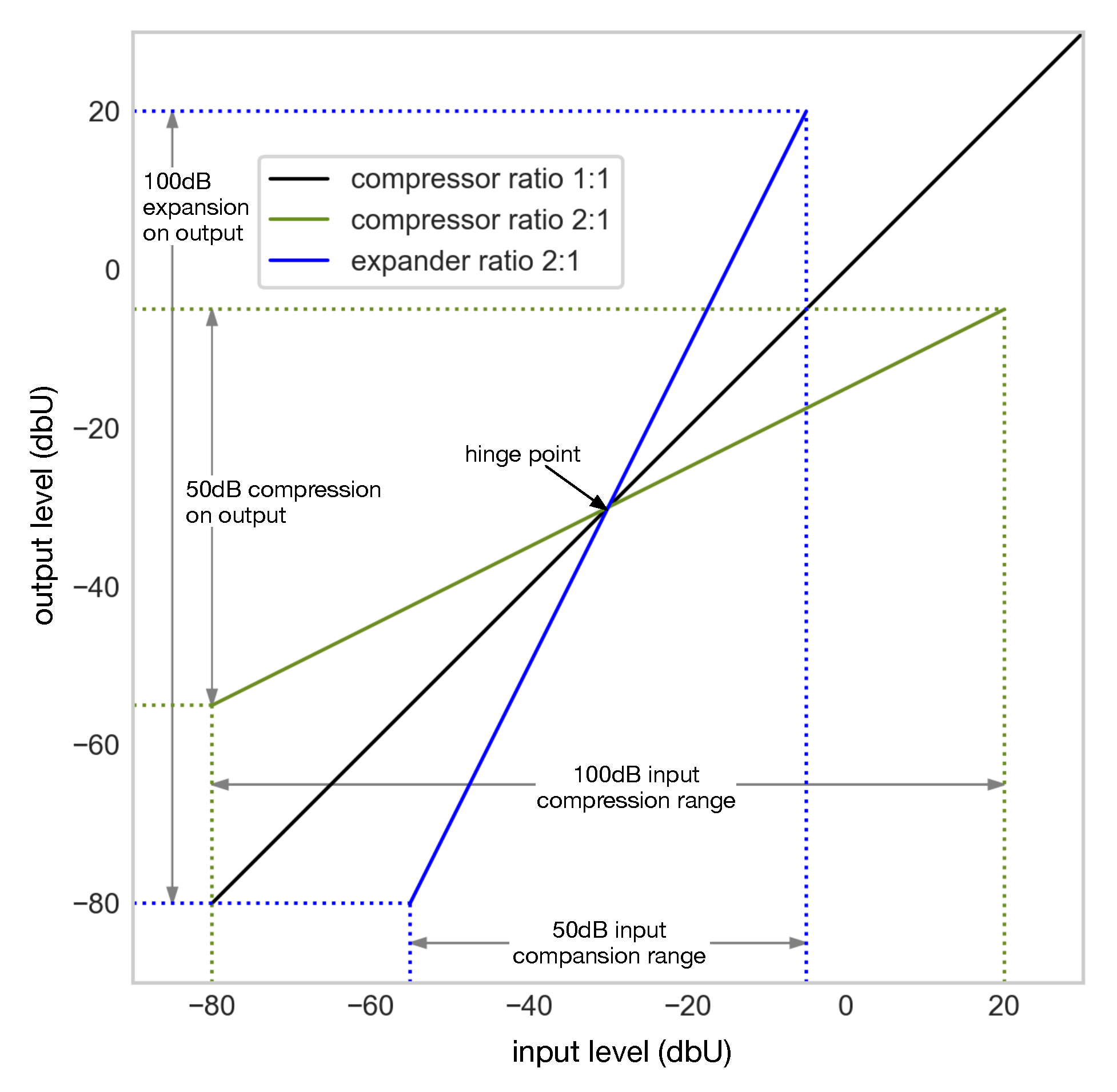


| Delay Range (ms) | Modulation | Effect Name |
|---|---|---|
| 0–20 | - | Resonator |
| 0–15 | sinusoidal | Flanger |
| 10–25 | random/sinusoidal | Chorus |
| 25–50 | - | Slapback |
| >50 | - | Echo |
© 2020 by the authors. Licensee MDPI, Basel, Switzerland. This article is an open access article distributed under the terms and conditions of the Creative Commons Attribution (CC BY) license (http://creativecommons.org/licenses/by/4.0/).
Share and Cite
Wilmering, T.; Moffat, D.; Milo, A.; Sandler, M.B. A History of Audio Effects. Appl. Sci. 2020, 10, 791. https://doi.org/10.3390/app10030791
Wilmering T, Moffat D, Milo A, Sandler MB. A History of Audio Effects. Applied Sciences. 2020; 10(3):791. https://doi.org/10.3390/app10030791
Chicago/Turabian StyleWilmering, Thomas, David Moffat, Alessia Milo, and Mark B. Sandler. 2020. "A History of Audio Effects" Applied Sciences 10, no. 3: 791. https://doi.org/10.3390/app10030791
APA StyleWilmering, T., Moffat, D., Milo, A., & Sandler, M. B. (2020). A History of Audio Effects. Applied Sciences, 10(3), 791. https://doi.org/10.3390/app10030791






